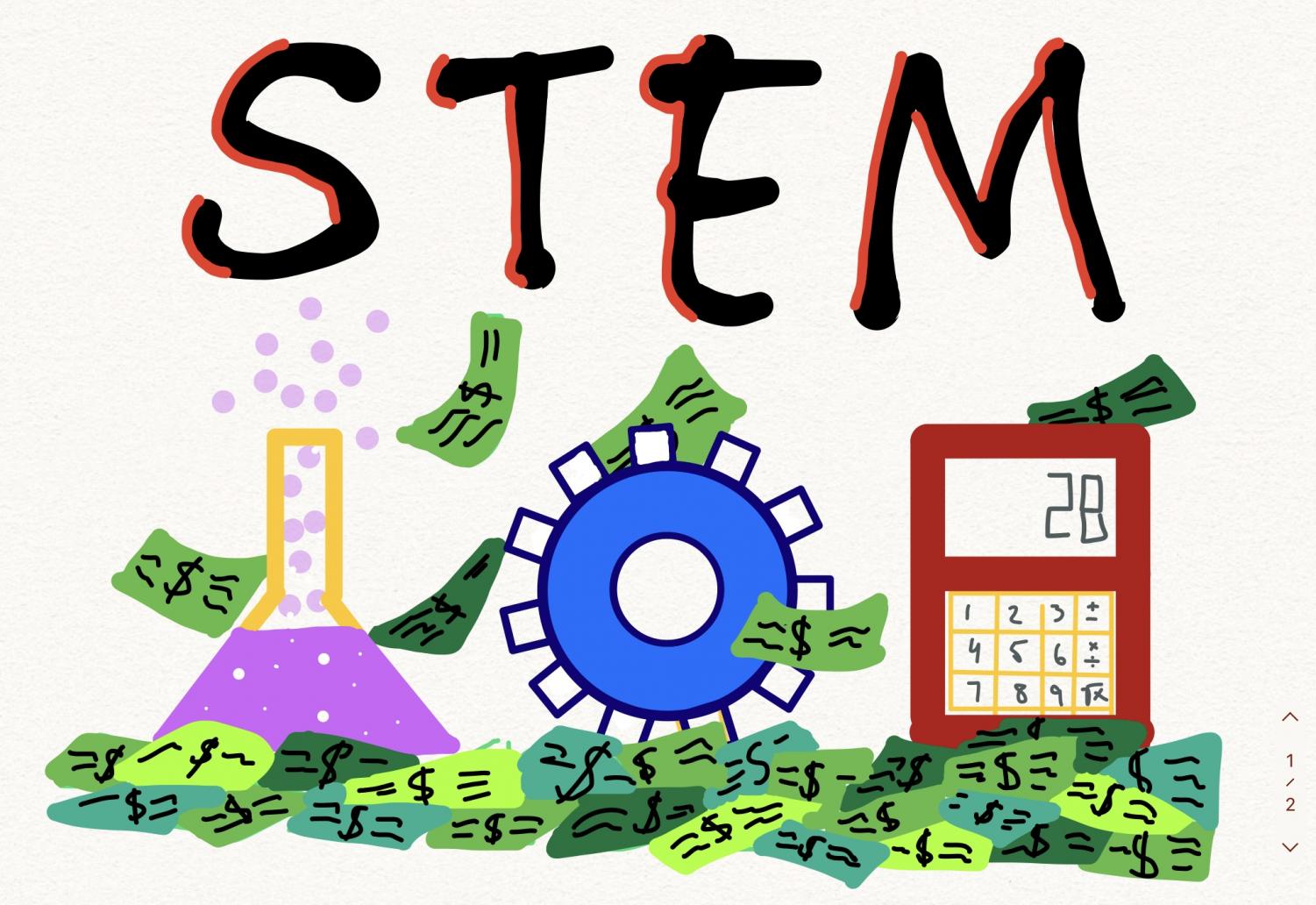STEM: The Biggest Disappointment of the 21st Century
Nobody asked for another 3D printer.
September 18, 2020
I just started my senior year of high school, so that means it’s the last year I am able to participate in FIRST Robotics. I’ve been a leader on the team the past two years, and we’ve been to Championship eight out of the nine years we’ve been a team. It would make sense that a championship qualifying team would grow as time goes on – but the opposite is happening. The farther we have advanced as a team, the smaller our team has grown.
I’m not a scientist, but over the years I’ve tried to figure out why this is happening. I’ve noticed the same is happening across the country as schools pour millions of dollars into STEM programs, only for engagement to drop dramatically. So why is STEM failing in a world where we need it the most?
Firstly, we need to redefine what STEM actually means. In the U.S., the traditional acronym for STEM is science, technology, engineering, and mathematics, with the recent addition of art (STEAM). But let’s face it: only one of the letters really applies.
If you happened to visit a science fair (or STEM exhibition these days) chances are you wouldn’t even see that much variety in the sciences. Chemistry, geology, physics, even biology would probably get beat out by LEGO robots and apps people have coded with third party software. So therefore, science is too broad a term to include in the acronym.
We will come back to technology, but engineering is also a bad word to include in STEM. In 1985, there were more people in universities studying art than were studying engineering. As a culture we’ve pushed the importance of computer science over engineering to the point that students who may be interested in general, chemical, mechanical, electrical, or bioengineering are made to believe the future is only in tech.
Now we arrive at mathematics. The U.S. for a while now has consistently been behind most of Asia in math proficiency. Ask the average high schooler, or adult for that matter if they like math. Most of them will say the same thing: I hated math then and I hate it now. So really, mathematics is just thrown in there to try and intimidate other countries.
That leaves us with technology. Technology is the only letter of STEM that actually makes sense. Computer Science is a field that has grown exponentially in the past few years. Computing jobs have been in high demand recently, yet the field has remained static. So we’ve redefined STEM as just technology. Well, that certainly cuts down our pool of people who might be interested. But a common misconception is that technology is just bug fixing or writing extensive complicated programs. The truth is that jobs in computing (or any STEM field for that matter) are problem solving, and in its broadest sense: creativity.
The entire point of science is to ask questions. Be curious, think outside the box. That’s what technology is, pushing the limits of intelligence and what we know. Creativity pushes the mind to think bigger, to think and dream about things that are thought to be impossible.
However, in our current education system creativity is suppressed for order and stability. There’s no room to think creatively because the teachers have to get through the curriculum. This is in no way the teacher’s faults, years of tradition have influenced the way they run their classrooms.
In every science class, you are instructed on what to do. Your teacher gives you a lab and you follow the instructions. Never do they let you explore for yourself. (I do concede that total chaos is a problem, but organized creativity is the goal.) Even in advanced classes, you are instructed to follow directions and accept what you’ve been taught as truth. Asking questions about why things happen the way they do, or what happens if I did this are almost unheard of. Math and science classes in middle and high school are classes where the material is forced on you and you’re expected to repeat it back on a test, only to forget it once the test is over.
One thing that is commonly overlooked in creativity is that in order to be creative, you have to accept the risk of failure. Especially in the world of STEM, failure is inevitable. If you did everything right all the time, you would never learn. Failure helps you think creatively, which helps you think bigger, which leads to success in a STEM field. By the time you get to a high paying job in a STEM field, you know from experience how to approach projects and avoid dangerous outcomes. But we’re not taught that it’s okay to fail. Our measure of success is in letter grades, and for most, anything less than an A or B means failure.
This pressure to perform holds students back, especially in math and science. Failure is seen as an admission of faults, not trial and error. We’re taught that if we fail, we’ve done something wrong – but that’s the opposite of how failure should be approached. Students should be taught that failure means you’ve tried something and now you can change your approach and try again. Failure is not a cover for laziness or confessions of your imperfections.
You see, it really doesn’t matter how much money is dumped into STEM programs. We don’t need fancy science buildings or million dollar equipment to learn basic skills in STEM. What we need is a change in how we approach the sciences. Students lose interest in math and science because they believe they won’t succeed. It’s not because students can’t do it or aren’t interested, it’s because they aren’t taught how to approach STEM fields.
If we shift our culture and education system, the STEM crisis would cease to exist. Schools wouldn’t need to waste taxpayer money on barely used science wings or fancy 3D printers. The honest truth is this: you don’t need to be the smartest person in your class to do well in a STEM field. All you need is a little creativity and perseverance to keep trying even when you want to give up.
As someone who isn’t a scientist but appreciates the value of STEM in a rapidly evolving world, I want to see more students in STEM. Even if you don’t agree with me at all, something has to change. Whether that be education, funding, or making the sciences more accessible, our current STEM initiatives are failing, and disappointing millions of students every year.

